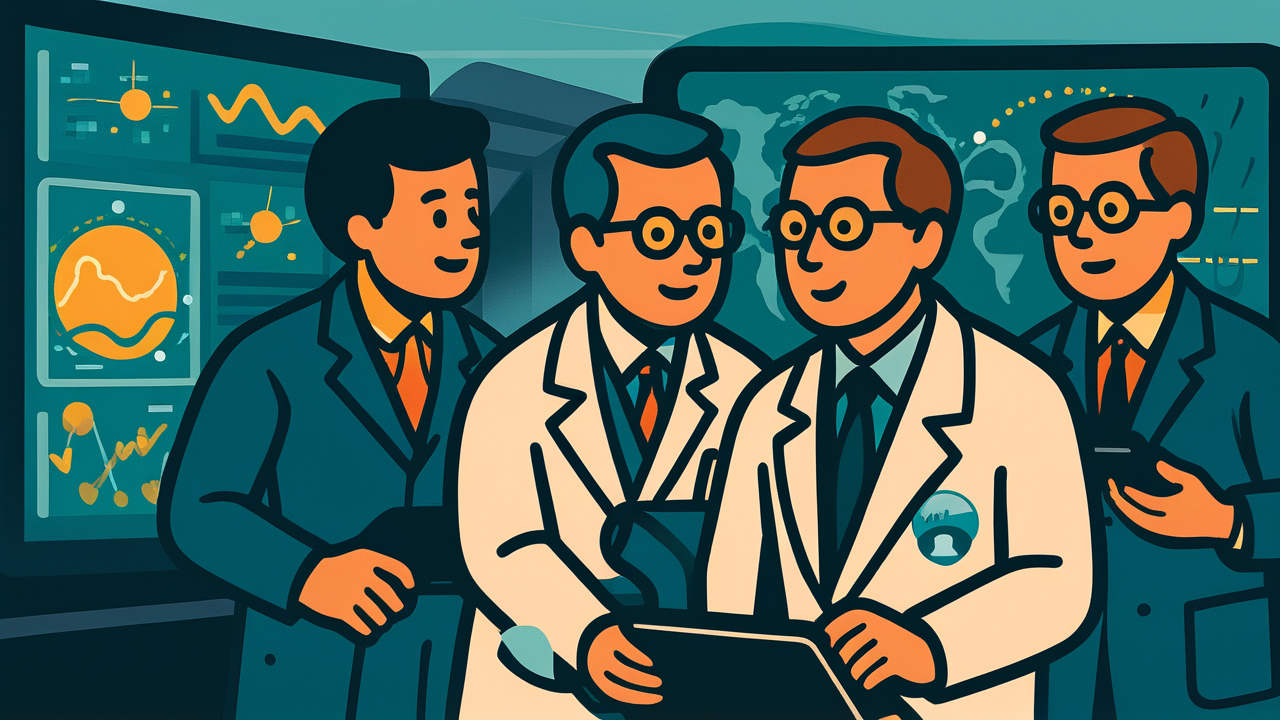[Disclaimer] This article is reconstructed based on information from external sources. Please verify the original source before referring to this content.
News Summary
The following content was published online. A translated summary is presented below. See the source for details.
Traditional climate simulators face a major challenge: they can’t capture small-scale weather phenomena like individual thunderstorms or tropical cloud formations due to computational limitations. When scientists need to track these detailed processes, they use ultra-high-resolution simulations called cloud-resolving models (CRMs) that can see how individual clouds form and evolve. However, these detailed simulations are so computationally expensive that running them for even a decade of global climate forecasts is practically impossible with current technology. Scientists are now exploring a revolutionary approach: using machine learning to learn from these expensive detailed simulations and create AI models that can run tens to hundreds of times faster while maintaining accuracy. This breakthrough could transform climate science by making it possible to include crucial small-scale weather processes in long-term climate predictions, helping us better understand and prepare for climate change impacts.
Source: NVIDIA Developer Blog
Our Commentary
Background and Context

Weather prediction is one of the most complex challenges in science. Traditional climate models work like giant calculators, dividing Earth into a grid and calculating what happens in each square. But here’s the problem: to see individual clouds, you’d need squares just a few kilometers wide. For the entire planet, that means billions of calculations every few minutes!
It’s like trying to watch a movie by calculating every pixel’s color from scratch—technically possible, but it would take forever. That’s why most climate models use much larger grid squares (150+ km), which means they miss important details like how thunderstorms form or how clouds interact with each other.
Expert Analysis
The breakthrough here is using AI as a “compression algorithm” for physics. Here’s how it works:
Step 1: Create Ultra-Detailed Simulations
Scientists run cloud-resolving models (CRMs) at incredibly high resolution (2km grids). These can see individual clouds forming, growing, and dissipating. It’s like having thousands of weather stations in the sky, each reporting every few minutes.
Step 2: Train AI on the Patterns
Machine learning models study these detailed simulations and learn the relationships between large-scale weather patterns and small-scale cloud behavior. The AI essentially learns the “rules” of how clouds behave without needing to calculate every water droplet.
Step 3: Fast Predictions
Once trained, the AI can predict cloud behavior 10-100 times faster than traditional methods. It’s like learning to recognize a friend’s face instead of analyzing every facial feature each time you see them.
Additional Data and Fact Reinforcement
The scale of this challenge is mind-boggling:
• Traditional models use grids of 150+ kilometers
• Cloud-resolving models need 2-kilometer grids
• That’s 75 times more detail in each direction
• Or 421,875 times more calculations (75³) for 3D atmosphere!
• Running a 10-year forecast at this resolution would take months on supercomputers
Why this matters for climate prediction:
• Clouds reflect sunlight (cooling effect)
• Clouds trap heat (warming effect)
• Small errors in cloud prediction = big errors in temperature forecasts
• Better cloud models = better climate change predictions
Related News
This development is part of a larger trend of AI revolutionizing scientific computing. Just as AI learned to predict protein structures (AlphaFold) and generate images (DALL-E), it’s now learning to predict weather patterns. The timing is crucial as extreme weather events become more common and climate predictions become more important for planning.
Tech giants like Google (with GraphCast) and Huawei (with Pangu-Weather) are also developing AI weather models. The competition is driving rapid improvements, with some AI models already outperforming traditional forecasts for certain types of predictions. This “AI race” in weather prediction could benefit everyone through more accurate forecasts.
Summary

AI is transforming climate science by learning to predict complex weather patterns from detailed simulations, making it possible to include crucial small-scale processes in global climate models for the first time. This breakthrough could dramatically improve our ability to predict and prepare for climate change impacts.
For students interested in climate science, computer science, or both, this represents an exciting frontier. You don’t have to choose between saving the planet and working with cutting-edge technology—fields like AI-powered climate modeling let you do both. Whether you’re passionate about environmental science, programming, or mathematics, there’s a place for you in this revolution that’s making the impossible possible.
Public Reaction
Climate scientists are cautiously optimistic, noting that while AI speeds up calculations, it still needs validation against real-world observations. Environmentalists see this as a tool for better climate change communication and planning. Tech enthusiasts are excited about AI’s expanding role in science. Some skeptics worry about “black box” AI replacing understood physics, though researchers emphasize AI complements rather than replaces traditional models.
Frequently Asked Questions
Q: Does this mean weather forecasts will be perfect?
A: No, weather is inherently chaotic. But AI can help us better understand patterns and improve long-term climate predictions, which is different from day-to-day weather.
Q: How is this different from my weather app?
A: Weather apps predict days ahead; this technology helps predict climate patterns years or decades into the future by better understanding how clouds affect global temperatures.
Q: Can I try this technology myself?
A: Many climate AI models are becoming open source. With some programming knowledge and a decent computer, students can experiment with simplified versions of these models.


